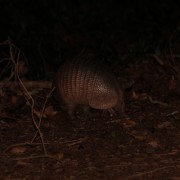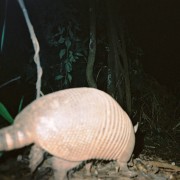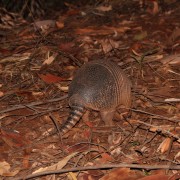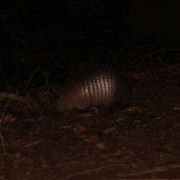Biodiversity
< Back
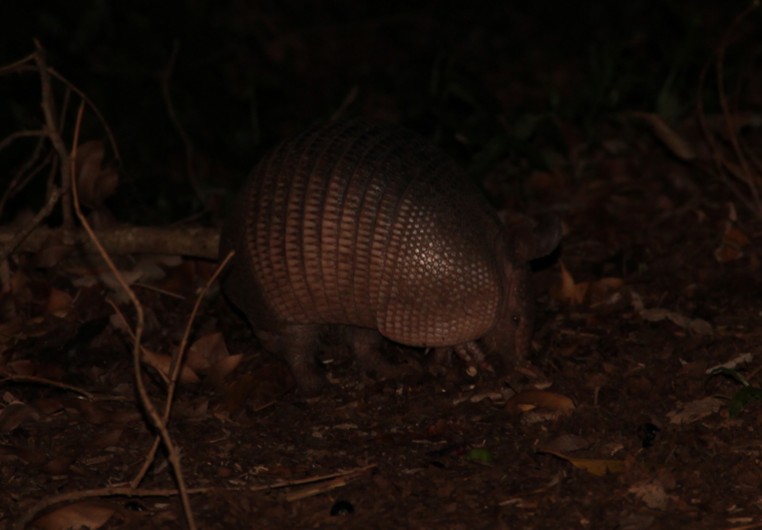
 Nine-Banded Armadillo
Dasypus novemcinctus | Linnaeus, 1758
Nine-Banded Armadillo
Dasypus novemcinctus | Linnaeus, 1758

PHOTO: Property of Native / Embrapa
Characteristics: Species with a body length ranging between 40 and 57cm, and a tail ranging from 29 to 45cm. Its body is covered by a brownish shell made up of bony plates; the head and tail, the latter longer than those of other armadillos, are also protected by overlapping scales. It has small, enamel-free teeth that grow continuously, and four fingers instead of five on its hands. It is called the nine-banded armadillo because of the number of bands it has in the middle of its body.
Distribution: From the US to Northern Argentina and Uruguay.
Habitat: Primary and secondary forests and from dense tropical forests to the "caatinga" scrublands and savannas.
Habits: A crepuscular and nocturnal species, it may also be seen during the day depending on the temperature; juveniles are most active in the morning, and in the late afternoon; these animals can swim and even feed in the water because they have very large bronchi and trachea, storing air and holding their breath for about 6 minutes.
It digs several burrows, but generally uses only one. These shelters, which measure up to seven meters in length, are almost always built on river banks. In them, there is always a nest carpeted with soft leaves and branches, which are periodically replaced. The animal's armor is good, but not full protection; so when threatened, the nine-banded armadillo prefers to run away, digging a hole in the ground incredibly fast.
Diet: Classified as "generalist insectivore," it feeds mainly on insects, but also small vertebrates, roots, earthworms, snails, and even carrion.
Breeding: The gestation period is 120 days, usually giving birth to 4 pups, all of the same sex.
In the UFRA area: This species of armadillo has broad spatial distribution on São Francisco Sugarmill's farms. It was found in six different habitats: organic sugarcane fields, exotic forests, wetlands with riparian forests, native forests, drainage ditches, and in fields in spontaneous regeneration. It is an infrequent species, as it was spotted only ten times.




